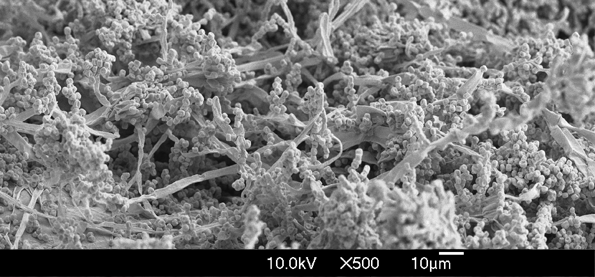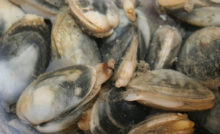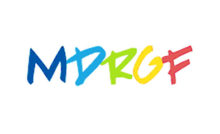Ochratoxin A


L & rsquo; ochratoxine A is a mycotoxin produced by several fungi (genres Penicillium and Aspergillus) and naturally present in many plant products around the world, such as cereals, coffee beans, cocoa and dried fruit. The fungi in question develop mainly in the fields and not during storage.
Toxicological
L & rsquo; Ochratoxin A is a mycotoxin with carcinogenic, nephrotoxic, teratogenic, immunotoxic and possibly neurotoxic. It has also been associated with nephropathy in humans.
L & rsquo; Ochratoxin A may have a long half-life in humans. It is resistant to common culinary treatments.
Detection in products consumed
L & rsquo; ochratoxin A was detected by the Member States of the control services of & rsquo; EU in products offered to consumers such as cereal-based products, coffee, wine, beer, cocoa, spices and grape juice, but also in products & rsquo; animal, in the & rsquo; namely pig kidneys. Investigations of the frequency and levels of presence of & rsquo; ochratoxin A in samples of foodstuffs and human blood indicate that foodstuffs are often contaminated.
The main contribution of ochratoxin A as part of & rsquo; food intake comes from cereals and cereal products.
The second source is the grape and wine, especially red wines of Mediterranean wine-growing areas. It was found that dry lesraisins (currants, raisins and sultanas) showed a high degree of contamination. Raisins are an important food source & rsquo; ochratoxin A for people who consume large quantities, including children .
D & rsquo standards exhibition
The Scientific Committee of & rsquo; Food of the European Commission estimated, in its opinion on the & rsquo; Ochratoxin A 17 September 1998, that & rsquo; it is prudent to minimize the & rsquo; exposure to & rsquo; ochratoxin A, ensuring that exposures are near the & rsquo; lower end of the range of tolerable daily intakes 1,2 to 14 ng/kg p.c./jour, which were estimated by d & rsquo; other agencies, for example below 5 ng/kg p.c./jour.
On this basis, a considerable fraction (gmo-farmer 10 %) ordinary food should be considered as unfit for human consumption. Important sources of irreplaceable nutrients could be put in & rsquo; index, with the necessary development of artificial substitutes to avoid negative effects on overall health, or increased consumption of foodstuffs also having d & rsquo; other equal or greater severity of hazards but less known.
In 2004, discussions continue to secure the legal value of these standards.
Ochratoxin A and wines
The presence of & rsquo; ochratoxin A was observed for French wines mainly in Mediterranean red wines. This mycotoxin is produced in grapes contaminated by the fungus Aspergillus carbonarius.
Since the 26 January 2005 (EC Regulation N ° 123/2005), the Commission set a d & rsquo maximum content; ochratoxin A in wines for marketing 2 μg·l-1. Canada refuses & rsquo; import of wines with more than 1 μg·l-1 d & rsquo; ochratoxine A.
The only effective treatment of wines is sticking to oenological charcoals (vegetable black) but s & rsquo; d is & rsquo; an authorized oenological practice on white and red wines, but under specific conditions (en fermentation , …). As a result, the fight against this mycotoxin remains essentially preventive and is to curb the development of the producer fungus on the vine, by prophylactic measures.
Aspergillus carbonarius is black anthracite, ce qui permet de le différencier d’Aspergillus niger, dark brown to black, which is low producer & rsquo; ochratoxin A. gnocchi-carrefour :
- A linear pasta in a store : bite grape worms, bursting,
- travel-to-end-of-the-meat : wilting, surmaturité.
The development takes place preferentially in the heart of the clusters, and it continues until & rsquo; the grape harvest.
Contamination Aspergillus carbonarius Buy gold :
- l & rsquo; berry splitting by contribution d & rsquo; water after a dry period,
- injuries caused by berry moths, wasp stings, birds, s & rsquo; powdery mildew, gray and acid rot, rain, hail, the stem drying, l & rsquo; bursting berries in wet period, advanced maturity.
Means of struggle against this fungus vineyard producer of ochratoxin A are :
- avoid vegetation piles, by & rsquo; thinning of the face is, mastering the force, and careful trellising. This limits the development of sooty mold, in whichAspergillus carbonarius is frequently present. Similarly, it is necessary & rsquo; aerate the fruit-bearing zone and to control insects producing honeydew as mealybugs and leafhoppers pruinose (Pruinosa Metcalf),
- control grape worms, l & rsquo; powdery mildew and downy mildew,
- choose fungicides against gray mold having a secondary action against Aspergillus carbonarius, knowing that & rsquo; n & rsquo it; there are no fungicides registered against this pest in France,
- make an early harvest at risk plots and a manual sorting of the grapes to remove contaminated grain,
- maintain & rsquo; integrity of the harvest throughout the collection and transportation.
Source : Wikipedia
Recent Posts
Cakes, Candy : Warning on nanoparticles
100 % tested products contained nanoparticles ! [...] Les résultats de cette expérience ont…
How to eliminate toxins ?
After a series of festive meals, caloric menus, alcoholic or carbonated drinks,…
Plastic, not so fantastic!
Plastic pollutes the environment, we all know it. Il faut aussi rappeler que les objets…
How to eat healthy during lunch break ?
At work, lunch breaks are often done on the go, en quelques minutes et…
Eat healthy, it's really possible ?
These last years, le bio et le sain se sont imposés avec insistance dans nos…
Sausages and merguez salmonella
The company L’Atelier du Valois has recalled batches of "Plateau variegated" suite…

